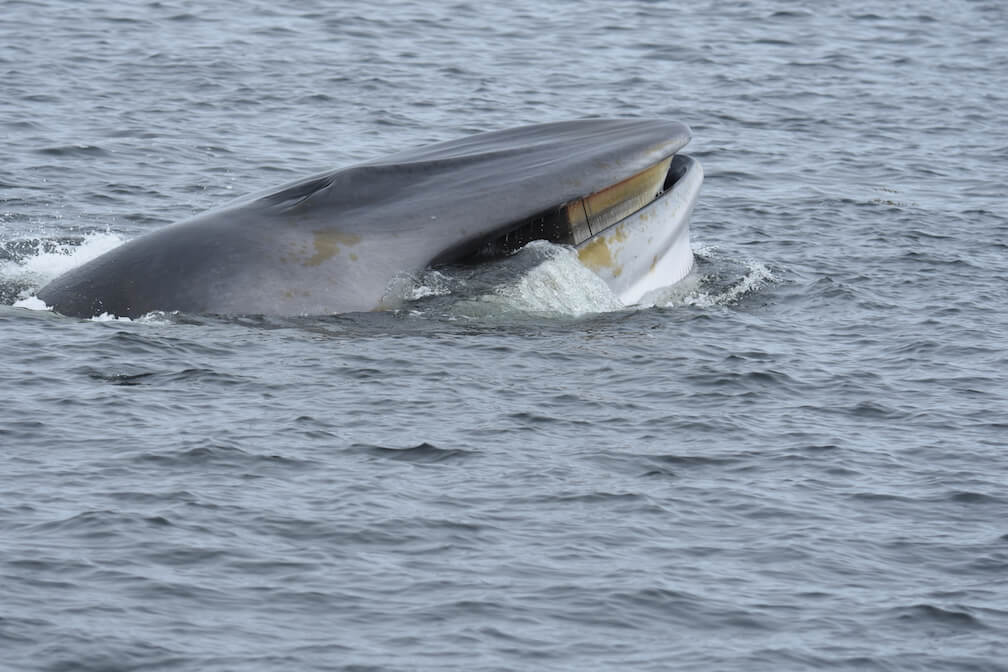Humans have two generations of teeth: deciduous teeth (from the Latin “to fall”) – also called “baby teeth” – and permanent teeth. Known as diphyodontia, this phenomenon is specific to mammals. However, amongst mammals, toothed whales (odontocetes) such as belugas, porpoises and dolphins are an exception to the rule. They are not visited by the Tooth Fairy since they only have one set of teeth that they keep for life.
And do baleen whales (mysticetes), which have no teeth, lose their baleen? No, they are not designed to be shed! Like nails and hair, baleen are composed of keratin and grow (and wear) continuously. Calves are born without baleen or with short baleen which grow at the same time as the animal grows.
Evolution of Teeth
The evolution of teeth and baleen in whales is still shrouded in mystery to some degree. We recently learned of a toothless, baleen-less whale, a discovery that changes our understanding of the appearance of baleen.
The common ancestor of toothed whales and baleen whales, like other mammals, had two sets of teeth. This means that toothed whales lost one of the two sets of teeth and baleen whales lost both. However, tooth buds still appear at the embryonic stage of baleen whales, even though the latter never develop teeth. This is a vestige of their ancestor, which did have teeth. Observing ancestral traits in embryos is useful for establishing phylogenetic trees, which are genealogical trees of living and extinct species. This helps better understand where certain traits come from and in what context they appeared or disappeared.
In addition to the disappearance of a set of teeth, the dentition of whales are different from that of other mammals in many respects. In most species of odontocetes, the teeth are very similar to each other, while other mammals have several types of specialized teeth: incisors, canines, premolars and molars. Additionally, in land mammals, the teeth of the upper jaw fit nicely into those of the lower jaw, which facilitates chewing. It is believed that this trait might have been lost in marine mammals because they swallow their food whole. The disappearance of a set of teeth in toothed whales is poorly understood, but it is surely related either to their diet or their aquatic environment. One of the hypotheses advanced is that, in order to survive, calves must be able to feed quickly like adults, which requires a complete set of teeth as soon as they are weaned in order to hunt effectively.






